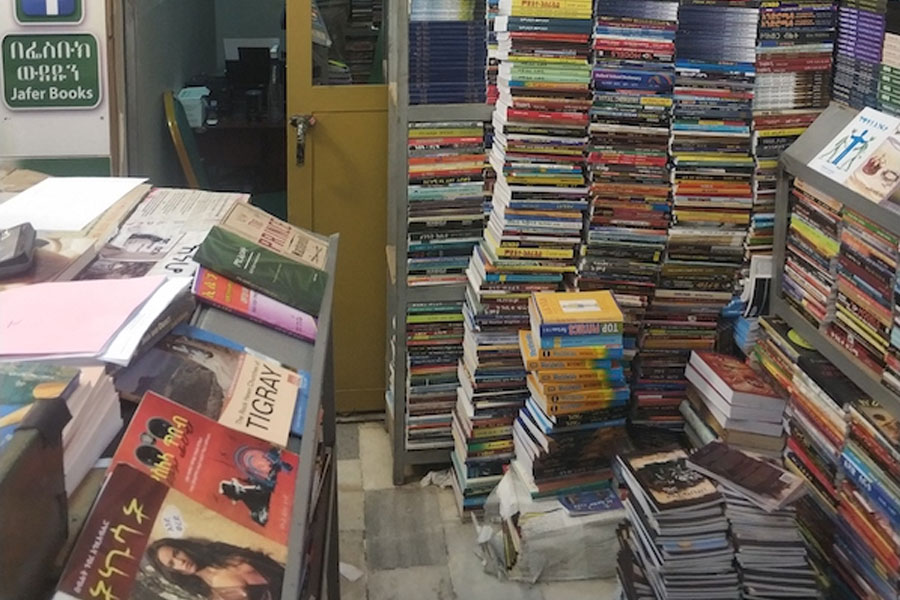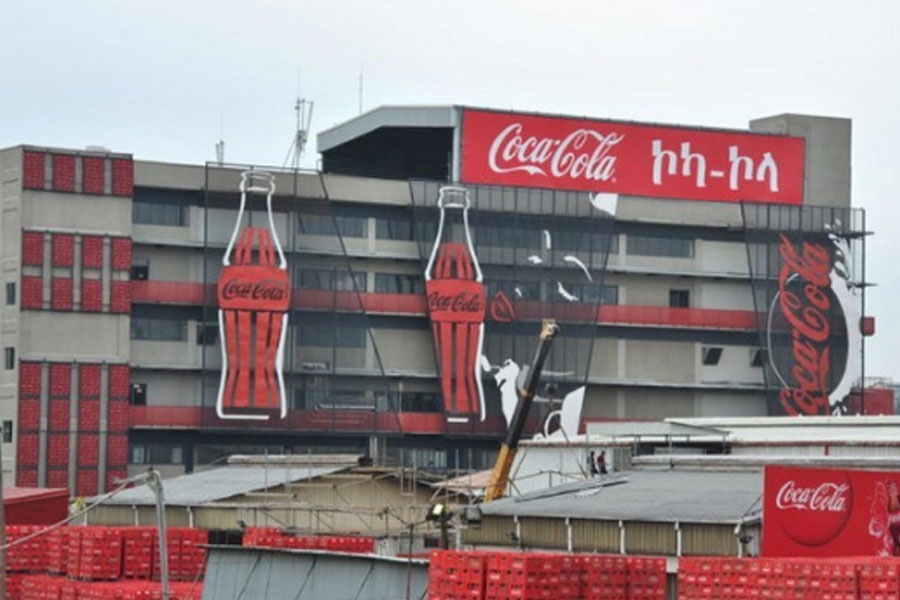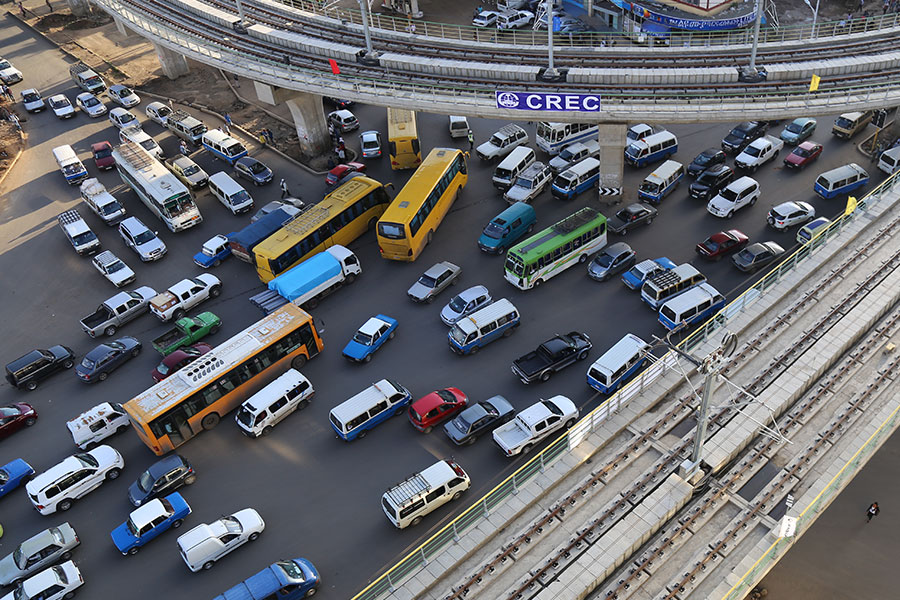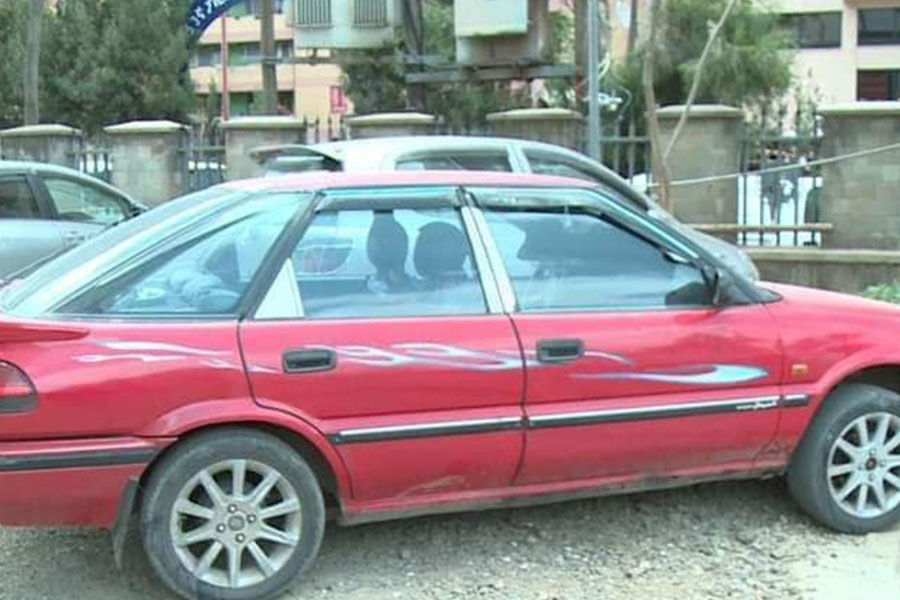
I recently picked up a takeaway chicken Mendi meal from a Syrian restaurant on the outskirts of Addis Ababa, near the Jakros neighbourhood.
The owner, a seasoned chef of Arabic cuisine, greeted me with a warm smile. Hailing from Damascus, he is part of the diaspora that fled Syria's nearly decade-long conflict. His command of Amharic was impressive; we conversed effortlessly without slipping into English. His restaurant operates around the clock, taking orders online and in person, offering convenience that has endeared him to his clientele.
It is not uncommon now to see Syrians in Addis, a sight that was entirely unexpected before the conflict. Unfortunately, not all have been as fortunate as this restaurateur. Many can be seen on the streets, some selling tissue paper during the traffic mayhem, others resorting to begging. I have noticed a few who have become entangled with khat, a local stimulant, near the Gerji Condominium area.
Addis Abeba has evolved over the last decade, transforming into a multinational melting pot.
The Chinese community has also become a prominent feature of the city's expat life. They have integrated into all layers of social and economic status, from construction workers to businesspeople and restaurant owners. But perhaps the quintessential image is that of a Chinese man clad in a construction helmet and safety reflector vest, ubiquitous in all city corners. The Chinese have undertaken major construction projects, such as roads, high-rise buildings, airports, and bridges. Known for working around the clock in adverse conditions, they often reside in makeshift camps, illustrating a strong, admirable, and inspirational work ethic.
Economically, China is a major partner for Ethiopia. It is involved in bilateral trade, industry, and finance and has a reach that extends to developmental projects across the country. The Chinese are not only concentrated in Addis; they can be found anywhere in the country.
Culinary influence is another area where the Chinese have made their mark. More than a dozen well-known Chinese restaurants have sprung up, with many more embedded within major hotel chains. The China Restaurant at Meskel Square prides itself on being the earliest in the city, while new additions continue to appear across the rapidly sprawling metropolis. The emblematic Chinese lanterns suspended from veranda ceilings and dimly lit dining rooms are becoming increasingly common sights.
Many Addis Abeba residents have become accustomed to eating noodles, partly thanks to Chinese restaurant chains like Little China. My favourite is the one in Century Mall, known for its generous portions and impeccable taste.
Local restaurants have also started specialising in noodles, showing how this Asian staple has been incorporated into the local culture. The penetration of one country's food into another is a telling indicator of cultural influence.
Indians also account for a notable segment of the expat community, though perhaps not in the numbers seen when Indian teachers were common sight in high schools. They hold their cuisine with delightful biryanis, dal, and chapati. Perhaps their most significant influence in Addis Abeba and beyond has been the proliferation of the famous three-wheelers, known locally as "Bajaj" after the Indian auto brand.
Until very recently, these vehicles served as the transport of choice in the distant peripheries of Addis Abeba and other major towns, beyond the reach of regular taxis. Surprisingly robust and sturdy, they brave the bumpiest of roads, providing a frugal mode of transport for many. Thousands of youths earn their living by offering taxi services in Addis Abeba and other towns across Ethiopia.
The popularity of the Middle Eastern staple, shawarma, which originated in the Levant during Ottoman times, has surged. My first introduction to this meal was in Togo years back, where a sizeable Lebanese diaspora resides and runs restaurants. Shawarma was not widely known in Addis Abeba's culinary landscape then. Now, it is a familiar delicacy for many. Arabic restaurants serve this wrap straight from specially designed rotating barbecues.
Local chefs have become adept at manoeuvring the cooking with style, and consumers relish it lovingly.
One distinctly cultural restaurant I had the opportunity to visit was Bab Al Yemen, near the Rwandan Embassy, courtesy of a diaspora friend. The place is themed in traditional Yemeni architecture, resembling a medieval castle from the outside. Its walls and gates are adorned with Middle Eastern designs, giving visitors the sensation of being transported from Addis Abeba to Sana'a or Aden.
Inside, the vibrant representation of Yemeni culture is even more pronounced. A spacious dining hall accommodates close to a hundred people comfortably, with a particular quarter reserved for those who prefer to kick off their shoes and dine while sitting on the floor.
My friend invited us to sit in this area, which initially felt unfamiliar and awkward. However, it felt more comfortable once we settled in than sitting on a chair. It brought a sense of grounding and ease I had not anticipated. It also enabled a homely atmosphere, sparking closer social interaction than might have occurred around a formal table setting. It became clear why this sitting position is preferred in Middle Eastern and Japanese cultures.
However, the changing faces of Addis Abeba are not limited to expats. The city is becoming more diverse, vividly representing Ethiopia's different regions. Walking the streets, one can hear many languages and dialects from all corners of the country. Migration from the regions is growing, with increasing representations of those born outside Addis Abeba. A few decades ago, large movement to the capital was uncommon. The influx has been overwhelming lately and remains unabated due to multiple factors.
The newcomers are increasingly woven into the city's socioeconomic fabric, making their influence felt. It's unlikely to walk a few meters without noticing how diverse Addis Abeba has become.
Culinary culture is a vehicle for this exchange. Restaurants themed around specific ethnic groups' staple foods are becoming more common. People usually dress in their cultural and traditional outfits during holidays and social events.
A multi-ethnic and multi-religious country, Ethiopia boasts a unique mix of languages, dresses, and faces, giving a remarkable kaleidoscope of diversity. Nowhere is this better reflected than in the capital. The amalgamation of cultures offers an opportunity to create empathy and tolerance while also being an opportunity to celebrate. The iconic Addis Abeba city boy, the "Arada," is increasingly being relegated to the background as more youth from the regions make the city their home. Though many call Addis Abeba their hometown, new arrivals with different cultures are also becoming its new face.
Growing up in Addis Abeba, I sometimes find it unrecognisable from the city of my youth. A quieter and more homogeneous city has, over the decades, given birth to a rapidly growing metropolis teeming with energy. The hustle and bustle are nothing like they were back then. Crowded streets and long commutes from faraway neighbourhoods to downtown are commonplace. Seeing expats all over the city, once a rare occurrence, is now expected.
Many " Ferengi" — European or North American tourists — casually traverse the famous Meskel Square or sip their latte at the cosy La Patisserie Cafe. Though not as overwhelming as other groups, larger numbers of people from various parts of Africa are prominently working in their countries' embassies or employed by international organisations like the UN Economic Commission for Africa (UNECA) and the African Union (AU).
With diversification comes globalisation, which increasingly influences the diversity of cultures. Addis Abeba is not immune to this phenomenon in a world connected virtually and spatially at breakneck speed. Depending on our perspective, this may be an opportunity and a threat. More conservative sections of society may see outside cultural influence as a threat to cultural identity. Conversely, those who consider themselves open and progressive may find exposure to new cultures beneficial.
With ever-faster globally integrating economies, the prevalence of social media platforms, and waves of information, it is not easy to stay immune to external influence. However, it requires a change mindset and adjustment to the new reality. Diversification and cultural influences are here to stay. While maintaining core and unique values defines who we are, opening up to what others have to share can be useful. Though there may be red lines concerning what comes with globalisation, cultural empathy goes a long way in promoting understanding and building bridges.
PUBLISHED ON
Oct 05,2024 [ VOL
25 , NO
1275]


View From Arada | Sep 10,2023

Fortune News | Mar 27,2021

Radar | Jul 15,2023

Fortune News | Nov 09,2019

Fortune News | Jul 27,2019

Viewpoints | Mar 09,2024

Fortune News | May 31,2025

Agenda | Jun 11,2022

Advertorials | Sep 15,2023

Life Matters | Dec 28,2019

Dec 22 , 2024 . By TIZITA SHEWAFERAW
Charged with transforming colossal state-owned enterprises into modern and competitiv...

Aug 18 , 2024 . By AKSAH ITALO
Although predictable Yonas Zerihun's job in the ride-hailing service is not immune to...

Jul 28 , 2024 . By TIZITA SHEWAFERAW
Unhabitual, perhaps too many, Samuel Gebreyohannes, 38, used to occasionally enjoy a couple of beers at breakfast. However, he recently swit...

Jul 13 , 2024 . By AKSAH ITALO
Investors who rely on tractors, trucks, and field vehicles for commuting, transporting commodities, and f...

Jun 28 , 2025
Meseret Damtie, the assertive auditor general, has never been shy about naming names...

Jun 21 , 2025
A well-worn adage says, “Budget is not destiny, but it is direction.” Examining t...

Jun 14 , 2025
Yet again, the Horn of Africa is bracing for trouble. A region already frayed by wars...

Jun 7 , 2025
Few promises shine brighter in Addis Abeba than the pledge of a roof for every family...